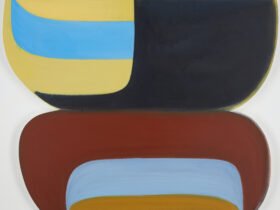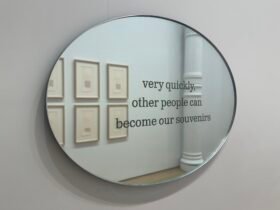

A painting in a Catholic church in central France, long believed to be a 19th-century replica of a Sandro Botticelli canvas, is in fact the work of the artist’s studio, experts say.
“Virgin Mary, Infant Christ and the Young John the Baptist” (c. 1510), hung in the church of Saint Félix in Champigny-en-Bauce, will be on public display at the Château de Chambord in the Loire Valley this month next to its original counterpart by Botticelli in one exhibition intended to examine duplicate Renaissance studio paintings.
Questions surrounding the attribution of the work were raised by art historian Matteo Gianeselli beginning in 2010, but the painting was ultimately dismissed as a much more recent copy by an artist unconnected to Botticelli. In June 2023, the timeless statue of the Virgin and Child was finally sent for analysis, and confirmed to date sometime between 1440 and 1510 and attributed to the Italian artist’s studio in Florence.
The original by Botticelli himself, ‘Virgin and Child with the Young John the Baptist’ (1490–95), is owned by the Uffizi Gallery in Florence and is now on loan to the Château de Chambord.
Findings from an October 2023 study conducted at the Center de Recherche et de Restauration des Musées de France on the once inconspicuous church painting used binocular microscopy, microsampling and X-ray analysis to authenticate the work.
The investigation revealed that the painting was made with egg tempera, an ancient medium that predated the introduction of oil paint. Analysis also showed that the pigments in the work were consistent with Botticelli’s color palette.
Both works of art depict Mary with an infant Jesus in her arms reaching out to and being embraced by John the Baptist; however, in the newly recognized work the group of figures is reversed. Art historians suspect that Botticelli de spolvero or dusting technique for transferring the underlying drawing to a new canvas.
“To avoid exact duplication, the original scene was repeated with variations, in this case inverting the group of figures and differentiating the background,” explains the Château de Chambord in a press release.
Botticelli studied under Filippo Lippi and later earned the patronage of the Medici family in 1475, establishing him as an influential painter in Florentine high society.
“We are honored to receive these two pieces,” general director of the Domaine national de Chambord Pierre Dubreuil, where the Renaissance castle is located, wrote in a statement. “It reminds us that the Loire Valley was and still is the land of the Renaissance, where the influence of Italian artists was fundamental.”













Leave a Reply